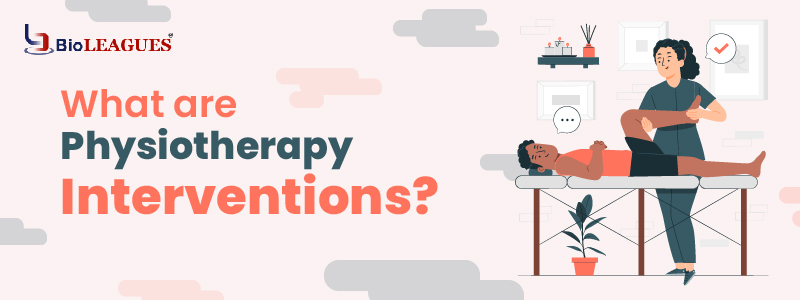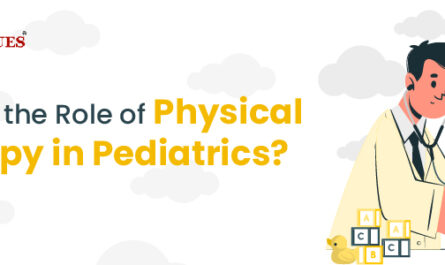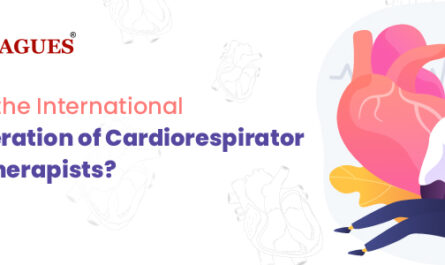Physiotherapy interventions refer to treatments and techniques used by physiotherapists to improve physical health and mobility. These interventions are tailored to the specific needs of patients based on their medical conditions and requirements.
The key intervention is the use of information technology in physiotherapy. Information technology has introduced many digital tools to take physiotherapy to the next level of progress. In addition, this medical sector has seen many major interventions, such as the use of physical activity and cognitive strength training, to address various illnesses.
Keep reading this blog to discover key interventions in physiotherapy:
Digital Interventions in Physiotherapy
Digital interventions in physiotherapy have become common because of their Potential to improve health monitoring, treatment, and coaching. The use of digital technology helps improve the delivery and effectiveness of physiotherapy treatments. It enables personalised, remote, and data-driven care to patients.
Here are the key digital interventions impacting physiotherapy:
Telehealth and Virtual Consultations
Using telehealth services, physiotherapists can provide virtual consultations and treatments to their patients regardless of their location. Physiotherapists can use telehealth services to perform virtual assessments and monitor patient’s progress through video conferences. All this happens in real-time without requiring therapists or patients to travel. Also, it makes it possible to provide treatments to patients in remote or underserved locations that lack adequate health and/or travel infrastructure.
Wearable Technology
Wearable health gadgets like fitness trackers and smartwatches are opening up new avenues in the field of physiotherapy. Wearable technologies and sensors make it easier to monitor vital signs, movement data, and other information.
Therapists can use this data to track patient progress and make necessary improvements. Reliable patient data and real-time monitoring allow therapists to provide customised treatment plans for better recovery. Some examples of these technologies include electromyography sensors, inertial sensors, fitness trackers, etc.
Mobile Apps
Physiotherapy interventions delivered via mobile apps are gaining popularity because they support behavior change. Physiotherapy mobile apps can incorporate behavior change techniques (BCTs) that are conducive to physiotherapy care. BCTs help achieve physiotherapy care, including goal setting, self-monitoring, alerts, etc. What sets these apps unique is that they support patients’ ongoing performance. These apps are inexpensive, scalable, and accessible.
Virtual Reality (VR) and Augmented Reality (AR)
AR and VR technologies are transforming physiotherapy, bringing innovation to modern practices. Although these emerging technologies are still under development, they boast surprising Potential in making physical therapy easier and more efficient. While VR can provide engaging environments to rehabilitation workout, AR applications can overlay instructions and improvements on a patient’s movements in real-time.
Artificial Intelligence (AI) and Machine Learning
The AI technology helps physiotherapies assess patient data and create customised treatment plans accordingly. Similarly, machine learning programs can help therapists predict recovery progress and identify any issues at the earliest stage. So, therapists can provide timely interventions.
Digital Imaging and Motion Analysis
High-resolution imaging techniques help in diagnosing existing or potential musculoskeletal conditions and tracking patients’ progress over time. In addition, advanced cameras and sensors can be used to identify movements, helping therapists analyse biomechanics and diagnose any issues properly.
EHR Integration and Data Management
Electronic Health Records (HER) systems ensure that patient data is easily accessible and shareable to healthcare providers. In addition, analyzing large datasets makes it easier to determine treatment efficacy and patient adherence.
According to the Potential of digitalisation within physiotherapy: a comparative survey, physiotherapists see a high potential for digitalisation in healthcare. Although there are concerns about data security and insufficient financial remuneration, such issues can be fixed with ongoing research work in this field.
Physical Activity in Physiotherapy
For many years, physiotherapists have been relying on physical activity in Physiotherapy to treat various health conditions, including neuromuscular diseases, orthopedic, respiratory, pediatric, and non-communicable diseases, and many more.
Physical activity means any body movement that needs body energy. This includes any motion performed throughout the day. For example, taking your dog for a morning walk, traveling from one place to another, engaging in physical workout, and gardening alike. So, PA also helps prevent conditions like obesity and hypertension, thus improving quality of life, mental health, and overall well being.
Here is how physical activity intervenes in physiotherapy:
Rehabilitation and Recovery: Physical activity can be very helpful for patients in rehabilitation, especially those dealing with injuries or surgeries. For patients like these, physiotherapists created personalised and structured exercise programs that help restore their strength and motion. These exercises also help restore muscle strength, enhance joint mobility, and prevent stiffness, which are important for better and faster recovery.
Chronic Disease Management: Regular physical exercises are critical to manage chronic illnesses such as heart diseases, arthritis, diabetes, heart disease, stroke, and respiratory disorders. It also helps boost metabolic function and immune strength. For example, aerobic exercises enhance cardiovascular endurance and resistance training improves muscle strength. All of this further helps manage chronic health issues.
Pain Relief: Physical activity is a crucial physiotherapy intervention for patients suffering from chronic pain. Physiotherapists provide them with personalized exercise plans targeting pain sources, strengthening muscles, and improving postures. This further results in reduced pain and better functional capabilities. As a result, patients can perform their day-to-day activities with increased ease and comfort.
Better Mental Health: Many studies have proved that physical activity reduces stress, anxiety, panic, and depression by releasing endorphins and promoting better sleep. Engaging in regular workouts can improve the self-confidence, mood, and cognitive function of patients.
Cognitive Sports Training in Physiotherapy
Cognitive sports training helps individuals at any age improve their brain functioning, which is crucial for auditory or visual intake, quick processing, and fast reaction. This type of cognitive training also involves a full range of eye movement and strengthening exercise helping improve eye control, so patients can track objects and read more efficiently.
Physiotherapists are incorporating cognitive sports training in physiotherapy to provide relief in conditions like memory problems, Alzheimer’s, Parkinson’s, stroke, stress, depression, sleep disorders, and brain damage. As mentioned above, any type of physical activity, including sports training, produces more energy for the brain and leads to less stress hormones.
Here are some practical applications of cognitive sports training in physiotherapy:
- Cycling enhances brain power and leads to a positive impact on cognitive health.
- Swimming requires aerobic and anaerobic energy processes. So, this cognitive sports activity has a huge impact on working memory and our brain’s processing speed. Swimming regularly improves mood by improving blood flow to our brain and boosting the release of neurotrophins that stimulates brain cells development.
- Balancing exercises challenge our body’s visual and vestibular system, which further stimulates the brain. As a result of these exercises, the brain forms new neural connections which makes it more resilient and maintains cognitive functions.
- Strength training is another type of cognitive sports training that improves blood flow to our brain and supplies more oxygen and nutrients to the brain. Many credible studies suggest that strength training improves cognitive functionality such as concentration, working memory, and attention level.
Stroke Rehabilitation in Physiotherapy
Stroke is one of the most common and serious health problems resulting in adult disability. The most common risk factors behind stroke are diabetes, hypertension, tobacco consumption, unhealthy diet, obesity, etc. Stroke rehabilitation in Physiotherapy is an ongoing process that begins in the acute phase. The rehabilitation involves a multidisciplinary team, and physiotherapists are an important part of it.
The past few decades have seen a major growth in clinical trials related to physiotherapy interventions used in stroke rehabilitation. Findings of credible studies suggest that physical therapy is very effective after a stroke.
Physiotherapists play a pivotal role at various stages of recovery using interventions and therapeutic exercises:
Early-Stage Rehabilitation
At this stage, physiotherapy starts in clinical settings in a hospital. It focuses on preventing stroke complications such as pressure sores, muscle contractures, and deep vein thrombosis. Therapists work on the following:
- Ensuring proper and accurate body positioning and movement to prevent stiffness and promote circulation.
- Guiding patients about moving safely in bed, including sitting up, rolling, and shifting to a chair.
- Engaging them in various basic motion exercises for joint flexibility and muscle tone.
Intermediate Stage Rehabilitation
At this phase, rehabilitation seeks more active involvement from patients. This stage often takes place at home or in a rehab center. Key areas of focus are:
- Improving coordination and strengthening weak muscles with the help of targeted exercises.
- Enhancing walking ability by using assistive devices like treadmills, walkers, or canes.
- Practicing daily functional activities such as bathing, dressing, and cooking to make them as independent as possible.
Advanced Stage Rehabilitation
At this stage, physiotherapy focuses on refining and improving the skills gained in the earlier two stages. This stage focuses on the following:
- Incorporating high-intensity and challenging exercises to develop endurance and strength.
- Helping patients get involved with their community and return to work or leisure activities.
- Creating a long-term exercise routine to maintain health and prevent secondary complications.
For stroke rehabilitation, physiotherapists may also use specialized techniques like Constraint-Induced Movement Therapy (CIMT) to encourage the use of the affected limb, robotics, and VR to provide interactive rehabilitation experiences, and electrical currents to stimulate muscles.
These advancements (interventions), whether digital or non-digital, promise better results from physiotherapy. Although a lot of research work is still needed, undoubtedly the future of physiotherapy is bright in the light of these and many upcoming interventions.



